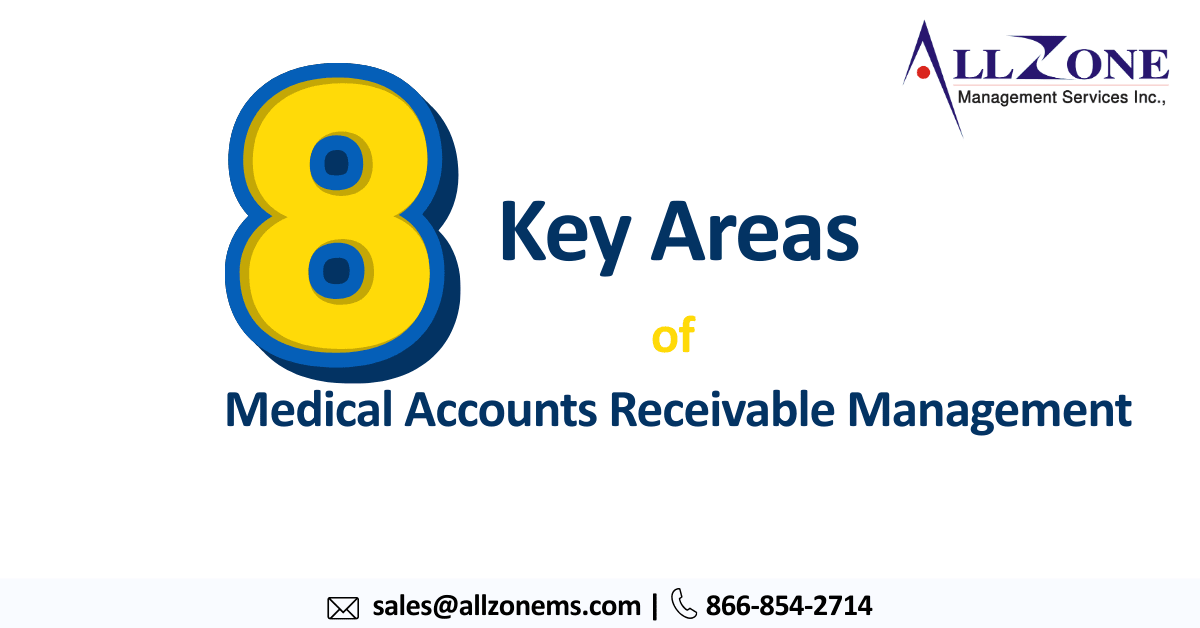The world of medical billing and accounts receivable (AR) can feel like a labyrinth for healthcare providers. Lost in a maze of codes, claims, and denials, it’s easy to see revenue slip through the cracks. But fear not! Here’s our guide to mastering AR and ensuring your practice thrives.
Medical Billing & Accounts Receivable
-
- Medical Billing: This is the quarterback of your revenue cycle. It involves generating claims that accurately reflect services rendered to patients, using the correct medical codes and patient information. These claims are then submitted to insurance companies for reimbursement.
- Medical Accounts Receivable (AR): Think of AR as your scoreboard. It tracks the outstanding money owed by patients and insurance companies for services provided. Efficient AR management ensures timely payments and minimizes lost revenue.
Managing medical accounts receivable (AR) is a critical aspect of healthcare financial management. Efficient AR management ensures timely reimbursement, optimizes cash flow, and maintains the financial health of medical practices.
Here are the eight key areas to focus on for effective medical accounts receivable management:
1. Patient Registration and Verification:
The foundation of efficient AR management starts with accurate patient registration and verification. This process involves collecting comprehensive patient information, including insurance details, contact information, and medical history. Verifying this information before the patient’s visit ensures that claims are filed correctly and reduces the chances of denials.
Best Practices:
-
- Use electronic health record (EHR) systems to collect and store patient information.
- Verify insurance coverage and eligibility prior to appointments.
- Ensure that demographic information is updated regularly.
2. Insurance Verification and Authorization:
Before services are rendered, it’s crucial to verify patients’ insurance benefits and obtain any necessary authorizations. This step prevents issues related to coverage denials and ensures that the services provided are billable.
Best Practices:
-
- Conduct real-time insurance verification using integrated systems.
- Obtain prior authorizations for procedures and treatments that require them.
- Maintain a checklist of common services requiring authorization.
3. Accurate Charge Capture:
Accurate charge capture involves recording all billable services and supplies provided to patients. Errors or omissions in charge capture can lead to revenue loss and increased accounts receivable days.
Best Practices:
-
- Use automated charge capture tools integrated with clinical documentation.
- Train staff to ensure accurate and complete documentation of services.
- Regularly audit charge capture processes to identify and correct discrepancies.
4. Efficient Claims Submission:
Submitting claims promptly and accurately is vital for minimizing the time it takes to receive payment. Claims should be submitted electronically whenever possible to expedite processing and reduce errors.
Best Practices:
-
- Utilize electronic claims submission systems to reduce manual entry errors.
- Implement claim scrubbing tools to identify and correct errors before submission.
- Monitor claim rejections and denials to address issues promptly.
5. Denial Management:
Even with the best processes, claim denials are inevitable. Effective denial management involves identifying the reasons for denials, appealing them when appropriate, and implementing strategies to prevent future denials.
Best Practices:
-
- Categorize and track denials to identify common trends.
- Develop standardized appeal processes for common denial reasons.
- Provide ongoing training for staff on denial prevention and resolution.
6. Patient Billing and Collections:
Managing patient billing and collections is crucial for maintaining cash flow. Clear communication with patients about their financial responsibilities and providing convenient payment options can reduce outstanding balances.
Best Practices:
-
- Send accurate and timely patient statements.
- Offer multiple payment options, including online payments.
- Establish clear financial policies and communicate them to patients upfront.
7. Payment Posting and Reconciliation:
Once payments are received, they must be accurately posted to patient accounts and reconciled with the billed amounts. This process ensures that the accounts receivable ledger is accurate and up-to-date.
Best Practices:
-
- Automate payment posting processes to reduce manual errors.
- Regularly reconcile payments with bank statements and EHR records.
- Address any discrepancies immediately to maintain accurate records.
8. Reporting and Analysis:
Regular reporting and analysis of accounts receivable metrics are essential for identifying trends, assessing the effectiveness of AR management strategies, and making informed decisions.
Best Practices:
-
- Monitor key performance indicators (KPIs) such as days in AR, denial rates, and collection rates.
- Use dashboards and reporting tools to provide real-time insights.
- Conduct regular meetings to review AR performance and identify areas for improvement.
Effective management of medical accounts receivable is essential for the financial health of healthcare practices. By focusing on eight key areas, healthcare providers can improve their revenue cycle processes, reduce outstanding receivables, and enhance overall financial performance. Implementing best practices in each area will not only streamline AR management but also contribute to a more efficient and patient-focused healthcare experience.
Partnering with a specialized team that provides AR Follow-up Services can significantly strengthen these efforts. Proactive AR follow-up ensures that unpaid claims are addressed quickly, denials are appealed efficiently, and cash flow remains steady. By integrating professional AR Follow-up Services into their operations, healthcare organizations can maintain healthier accounts receivable, reduce days in AR, and focus more on delivering quality patient care.

